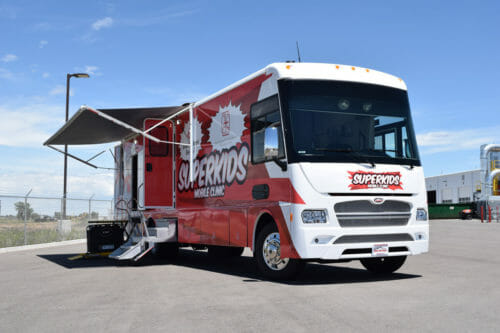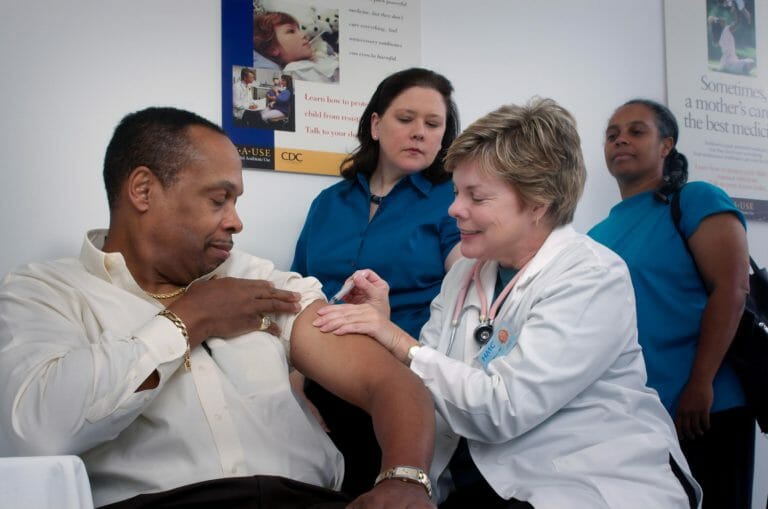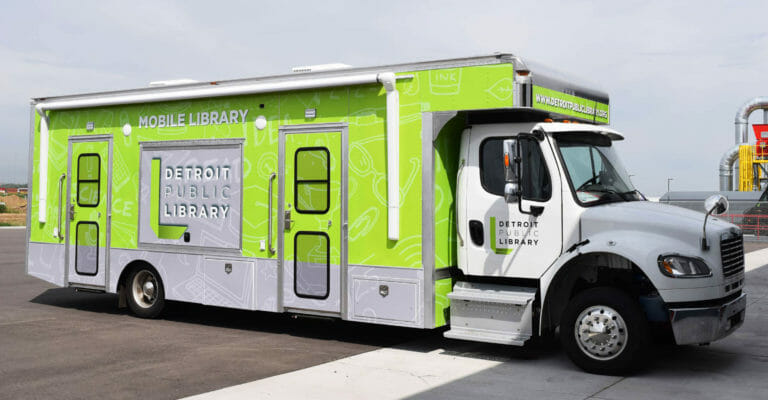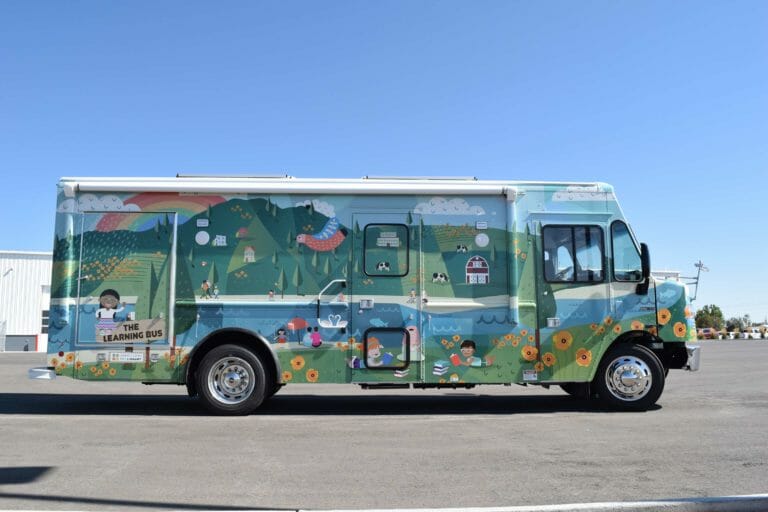Mobile Medical
Common Uses for Mobile Medical Vehicles
July 5, 2021

Mobile medical vehicles are used for a variety of purposes. These customized automobiles allow doctors, nurses, specialists, and technicians to provide critical medical services on the go.
In many cases, a mobile medical vehicle is used to serve portions of a community that otherwise would have difficulty accessing medical care. In other situations, these mobile clinics allow a growing practice to expand, without the high costs associated with building a second brick and mortar location.
Because of these and other factors, numerous medical practices and associations are turning to these vehicles for use. If you are considering a custom build, check out the following list of common uses for mobile medical vehicles.
Bloodmobile
Mobile bloodmobiles are the perfect solution for blood banks and hospitals that need to collect an increasing number of blood donations in a given month.
These mobile medical vehicles can be driven to office parks, schools, churches, and community centers to make it more convenient for blood donors to participate in blood drives.
The size and layout of a bloodmobile will depend a lot on the needs of the clinic or blood bank. They can be as large as a full-size bus or as small as a converted van.
Bloodmobile: Equipment
Most bloodmobiles are designed with the same basic equipment. The following are some of the common inclusions in a custom bloodmobile design:
- Blood pressure monitors
- Blood collection monitors
- Blood bag tube sealers
- Blood transportation boxes
- Blood bank refrigeratorsBlood pressure monitors, scales, donor couches or chairs, blood collection monitors or
- Sterile equipment, such as bandages
- Seats
- Garbage bins
- Snacks
- Water
Bloodmobile: Layout
A bloodmobile can be designed with any desired layout. Usually, the bloodmobile will feature a check-in area near the front where donors can fill out paperwork prior to giving blood. From here, a walkway can lead to an area where blood can be drawn.
Finally, bloodmobiles will need to feature ample refrigerated storage for blood bags, as well as a breakroom for medical personnel.
Dental Vehicle
Mobile dental vehicles are an excellent way for dental practices to expand their offerings. In some cases, a dental practice might employ the use of a mobile medical vehicle to better serve rural parts of their community or to reach home-bound or nursing-home-bound patients. In other cases, a practice could be looking to expand to a new location but is hesitant to spend the money on a second office. A mobile dental vehicle makes it possible to test out office hours in a new location without the investment of a mortgage or lease.
Dental vehicles can be designed to simply provide teeth cleanings or they can be upfit to allow for dental surgery. The size of the vehicle will depend largely on the purpose of the clinic.
Dental Vehicle: Equipment
Depending on how a dental vehicle will be used, different equipment and supplies can be included. The following are common additions to a mobile dental vehicle:
- Patient chairs
- Cabinet storage
- Operatory lights
- Dental handpieces
- X-ray imaging equipment
- Sterilization equipment
- Chairside CAD/CAM systems
- 3D imaging systems
- Surgical microscopes
Dental Vehicle: Layout
When customizing a mobile dental vehicle, the layout of the interior can be designed to meet any need. Generally, a mobile clinic will include a check-in area where patients can wait for their scheduled appointment. From here, the vehicle can be broken out into exam rooms and can even include a designated area for dental surgery.
Due to the imaging equipment often used by dental practices, a mobile dental vehicle is usually upfit on a large truck or bus chassis.
Mobile Eye Clinic
For an ophthalmologist looking to reach an increased number of patients, a mobile eye clinic can be an ideal solution. These clinics can be driven to any location to offer preventative eye care services.
A mobile eye clinic is often used at health fairs and schools to help promote the need for preventative eye care. This can also help eye specialists catch vision issues early on in children who might otherwise not attend an annual eye exam.
Mobile Eye Clinic: Equipment
The following is all common equipment found in a mobile eye clinic:
- Phoropter
- Retinoscope
- Eye chart
- Slit lamp
- Retinal camera
- Ophthalmoscope
- Tonometer
- Keratometer
Mobile Eye Clinic: Layout
When designing a mobile eye clinic, the layout can be customized according to the purpose of the team. Generally, an eye clinic will include a patient check-in area with seating, as well as exam rooms.
Additionally, a mobile eye clinic might include a specialized room for eye surgery.
Mobile Imaging Vehicle
Imaging is a powerful method for doctors and specialists to pinpoint health issues early on in patients. Through the use of ultrasounds, MRIs, X-rays, and other imaging techniques, doctors can diagnose more accurately and provide better treatment options for underlying health issues.
A mobile imaging vehicle allows medical teams to take these critical services on the go. Often, mobile imaging vehicles are used to promote awareness in a community and to reach underserved populations with important annual exams.
For example, a mobile imaging vehicle might host a week-long mammogram drive or offer ultrasound services in remote communities for pregnant mothers.
Mobile Imaging Vehicle: Equipment
The equipment included in a mobile imaging vehicle will depend on what type of imaging work will be done. The following are all common options for custom builds:
- Ultrasound equipment
- MRI, CT, and PET scanners
- X-ray imaging equipment
Mobile Imaging Vehicle: Layout
Similar to other mobile medical vehicles, an imaging vehicle will include a patient check-in space, as well as private exam rooms. The vehicle will also need to include ample space for large equipment and provide an area for medical personnel to review imaging results.
The size of the vehicle will depend largely on how much equipment needs to be transported and the size of that equipment. Often, imaging vehicles are upfit on large truck or bus chassis.
Primary Care Vehicle
Another common use for mobile medical vehicles is to offer primary care services. Primary care physicians will often employ the use of a mobile clinic to begin to expand their service area.
This is a great way for a clinic to grow, as well as to offer critical preventive services to more remote regions of the area.
A primary care vehicle can be designed to mimic the same workflow as a brick-and-mortar location.
Primary Care Vehicle: Equipment
The equipment found in a primary care vehicle will often include basic medical supplies and simple equipment. The following are all examples of what can be added to the design of a mobile medical vehicle:
- Bandages
- Gloves
- Masks
- Stethoscopes
- Blood pressure monitors
- Otoscopes
- Tongue depressants
- Antibacterial wipes
- Syringes
- Ointments
- Hand sanitizer
Primary Care Vehicle: Layout
A mobile primary care vehicle can be customized according to the clinic’s preferences. Generally, the design will include a patient waiting area and one or more exam rooms. Additionally, the layout can be customized with ample storage space for equipment and supplies.
Talk to Summit Bodyworks Today
If your medical practice is considering expanding to include mobile services, talk to the team at Summit Bodyworks today. We can assist you in creating the perfect custom build for your needs.
Interested in seeing the work we have done? Check out the Colgate-Palmolive Mobile Dental Clinic, a custom build our team designed.


